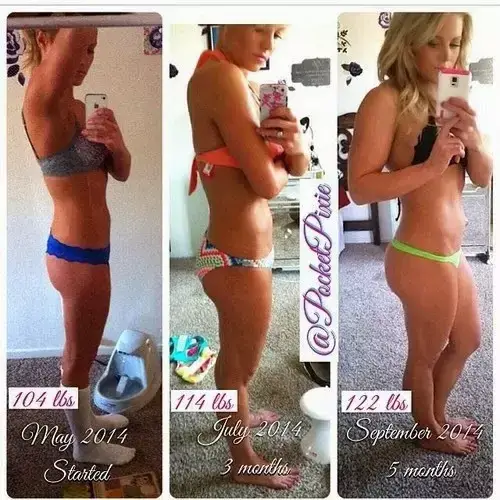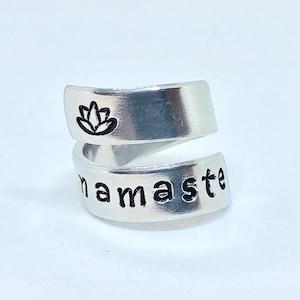. If you’ve ever taken a yoga class, you know the regimen.
You move through a series of postures, twisting and extending and developing strength and versatility. At the end of each session, you lie in Savasana( Corpse Pose), worn out however feeling great. Restorative yoga is different. It doesn’t include moving. You do not even extend.
Instead, you enter into each pose and stay still for 5 minutes or so, concentrating on your breath in a mindful method. As your body slowly realigns itself throughout the present, your breathing and heart rate slow. You relax and experience the same deep wellness, only with a lot less effort. Restorative yoga might feel passive, however it’s more like active relaxation– and the perfect antidote to your hectic, very- set up life. Corrective Yoga Basics There are 4 necessary to restorative yoga … Stillness. Instead of push yourself to the edge, you settle into a position and let your body open, taking all of the stress out of the muscles so that they are free to unwind. To help while doing so,
props are used to carefully hold your body
because particular posture. You can buy yoga-specific ones or merely
use items that you currently have. A poorly lit practice area. When you withdraw from sensory overload, it’s easier to uncover your body’s natural rhythm. Develop this environment by declining the lights, drawing the shades and/or using an eye covering during practice. A peaceful area. Noisy environments can increase the body’s stress-hormone levels.
Choose silence, which unwinds the brain even much better than relaxing music or nature sounds. Remaining easily warm. Your body will naturally cool down as you stay still. You might wish to keep your socks on and cover up with a blanket as you practice. 3 Restorative Poses Practicing for
20 minutes a day will assist train your body and your brain to become calm more easily. Some poses may compress the abdominal region, so ensure you have not consumed for at least
two hours before you get on your mat to permit food to absorb. To practice these poses, you’ll require a yoga mat, 2 to 3 blankets, a yoga strap (or belt or headscarf), two yoga bolsters or
routine bed pillows and
an eye covering( such as an eye pillow or washcloth). Many people choose to practice at night to unwind before bed, but experiment and see what works best for your regimen.

pressure and reduce stress. 1. Preparation: Fold one blanket into a large square, and place it on a mat that is set perpendicular versus the wall.
That will cushion your hips. Take another blanket, fold it into a slightly smaller square and place it in the middle of the mat to offer support for your head. Have your eye covering nearby. Set a timer for 10 minutes.2. Sit on your left hip with your back against the wall and legs hid from your mat. Plant your hands on the mat in
front of your body, thread the left arm under the ideal one to help you tuck and roll up until your legs are up against the wall. Your objective is to rest on the floor with your upper hands the wall and your back/pelvis location flat on the floor( revealed at left ). 3. As you look up, set your ankles, knees and hips in a line. Unwind your feet with toes neither pointed nor flexed.
If your legs are splaying outside, take your strap or scarf, connect it around your calves and confine your legs so that they are hips ‘width apart but in a straight line. 4. Place on your eye covering, or simply close your eyes. Open your arms in a V-shape at hands, palms up.
Breathe completely into your abdomen and lungs for 3 rounds of breath, using your exhalations to relax your face, lips and finally your entire body. 5. Rest in silence, breathing naturally. If your legs tingle or feel numb, bring the soles of your feet together
in a butterfly shape and lower your legs till the sensation returns. Position them versus the wall again. 6. When you’re prepared to get out of the position, wiggle your toes. Bend each knee one at a time, and slowly
walk your feet down the wall. As soon as you can reach your legs comfortably, slip off the strap if you’re using one. 7. Rest with your knees bent and feet against the wall. Move your legs down from the wall, lift one arm
over the head, slip off the eye covering, and gradually roll to that side. Rest on your side in a fetal position for as long as needed. 8. Roll into a seated position on the blanket, and take a moment to reflect on how you feel.
 MOUNTAIN BROOK Mountain Brook: This mild backbend opens your chest and shoulders, improves breathing and relieves stress in the throat while increasing a low mood. 1. Preparation: Fold two blankets into skinny rectangular shapes as broad as your yoga mat, and stack them on top of each other on one-third of the mat. Take the 3rd blanket, place it four inches far from the blanket stack and towards the top of your
MOUNTAIN BROOK Mountain Brook: This mild backbend opens your chest and shoulders, improves breathing and relieves stress in the throat while increasing a low mood. 1. Preparation: Fold two blankets into skinny rectangular shapes as broad as your yoga mat, and stack them on top of each other on one-third of the mat. Take the 3rd blanket, place it four inches far from the blanket stack and towards the top of your
mat . Roll it up midway or all the method to support your neck. Put the strengthen near the bottom of your mat. Set a timer for five minutes. 2. Sit in between the strengthen and the blanket stack, and drape your legs so that your knees are over the reinforce and your legs are flat on the mat. 3. Lie back, placing your shoulder blades on top of the blanket stack however making sure your lower back
isn’t touching the stack at all. Rest your neck on top of the roll. 4. Extend your arms, palms up, into a T-shape in the space
in between the blankets. Your chin must be slightly greater than your forehead, but if that’s unpleasant, alter the roll so that your chin and forehead are level
. Make any changes essential to end up being completely comfy. Your hips will be grounded on the floor. 5. Close your eyes and imagine your body as a mountain brook, streaming over the props. Breathe in totally through your nostrils, counting to 4. Breathe out slowly through your nose, counting to eight. Keep breathing at a comfy rate, with the
exhales longer than the inhales. 6. Start to breathe naturally and just be still in the posture. 7. Guide yourself back by breathing deeply in and out. Bending one knee at a time, anchor your feet on the reinforce. Roll the strengthen away from your body till your feet touch the mat.
Gently move the blanket roll to one side so that your head rests
upon the mat. 8. Pull your knees inward and roll onto one side, using one arm as a pillow to cradle your head. Rest for a couple of seconds. Inhaling, utilize your hands to press yourself up gradually to a comfy seat. Observe how you feel after this present.
< img loading= "lazy "src=" https://s17054.pcdn.co/wp-content/uploads/2021/02/SuppSideLyingStretch-DKJimenaPeck.jpg" alt="" class=" wp-image-36882" width =" 321 "height= "102" srcset= "https://s17054.pcdn.co/wp-content/uploads/2021/02/SuppSideLyingStretch-DKJimenaPeck.jpg 400w

Supported Side Lying Stretch: Like all restorative yoga presents, this two-sided stretch relaxes the nerve system, minimizing tension and inflammation. And since this posture impacts the digestive organs– the liver, gall bladder, spleen and stomach– it’s particularly good for improving gut health. After all, when you’re nervous or upset, you absolutely feel it in your stomach!
1. Preparation: Fold the blankets into 2 thick double squares, and stack them on top of each other to support your head at the top of your mat. Place the round bolster in the middle of the mat and the flat reinforce at the bottom. Set a timer for three minutes.
2. Sit in between the round and flat bolsters. Lay with your left hip on the floor, your ideal leg on top of the flat reinforce, and put your left leg in front of the reinforce at the edge of your mat.
3. Keep the round boost with your right-hand man as you breathe in, wedging the bolster into your waist. Exhale, moving your left arm forward, palm up, as you rest on your side. The blankets need to be supporting your neck and head. Make sure the top of your head lines up with your shoulder, hip and best foot.
4. Your best arm can rest against your hip. Or for more opening,
send your right arm over your head so that your right bicep rests versus your ear and your hand touches the flooring. (If your hand can’t reach, position a blanket or block under it for support.)
5. Close your eyes. Inhale totally. As you exhale, launch all effort in your body. Breathe naturally, and rest in silence.
6. When you are prepared to change sides, return your right hand to the area beside your left hand. Press versus the flooring, inhale and lift up gradually sideways. Turn away from the round reinforce, and keep turning to pertain to the opposite. Repeat the present on this side, once again setting the timer for 3 minutes.
7. When total, sit up slowly into a comfortable seated position. Position your hands to your heart, with your right hand stacking on top of your left hand. Close your eyes, and get in touch with your heartbeat. As you take much deeper breaths, feel the expansiveness in your waist, ribs and chest. Thank yourself for taking this time to support yourself in self-care so that you may continue to be an assistance for others.
Pictures © DK: Jimena Peck
Hurt Happens. Get Relief Now.
Windrush Organics Broad-Spectrum CBD Rub 500mg Extra Strength – 2 oz
This material was originally published here.
Sit on your left hip with your back against the wall and legs tucked away from your mat. Your objective is to lie on the floor with your legs up the wall and your back/pelvis area flat on the flooring( shown at left ). If your legs are splaying outward, take your strap or headscarf, connect it around your calves and confine your legs so that they are hips ‘width apart however in a straight line. Preparation: Fold two blankets into skinny rectangles as broad as your yoga mat, and stack them on top of each other on one-third of the mat. Sit in between the boost and the blanket stack, and curtain your legs so that your knees are over the boost and your legs are flat on the mat.




















